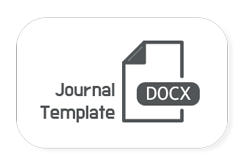Foreign Exchange Reserves and Import Demand in a Developing Economy: New Evidence from Nigeria
DOI:
https://doi.org/10.53935/26415313.v5i2.240Keywords:
Elasticity, Exchange rate, Fiscal policy, J-Curve, Marshall-Learner condition, Trade balance.Abstract
The attempt in this study has been to detect the influence of foreign exchange reserves on import demand in Nigeria. With data spanning from 2000 to 2020, we estimated the long-run and short-run import demand function using ‘fully modified ordinary least squares’ and ‘error correction model’ respectively after we established that our variables were integrated of the first order and that cointegration exists. The long-run import demand function pointed out that the effect of foreign exchange reserves on import demand is positive but insignificant but such effect turned negative and significant in the short-run. Import price was also noted to put forth a negative sway on import demand with its effect being significant. Income was observed to wield a positive long-run influence on import demand while the effect of exchange rate was positive and significant in the long-run but became negative and significant in the short-run. By the elasticity coefficients, income elasticity put forth a greater influence on import demand compared to every other variable with the coefficient being greater than unity. It therefore becomes pertinent for actions toward reducing the income coefficient to less than or equal to one to be instituted. It is critical that import demand management be regarded as an aspect of an inclusive stabilization strategy. Imports should be targeted as part of this effort to compensate for shortfalls in domestic production. Furthermore, strategies that reduce government spending or raise taxes (contractionary fiscal policy) could reduce income growth which is a chief driver of import demand.
Downloads
Downloads
Published
How to Cite
Issue
Section
License

This work is licensed under a Creative Commons Attribution-NonCommercial 4.0 International License.












